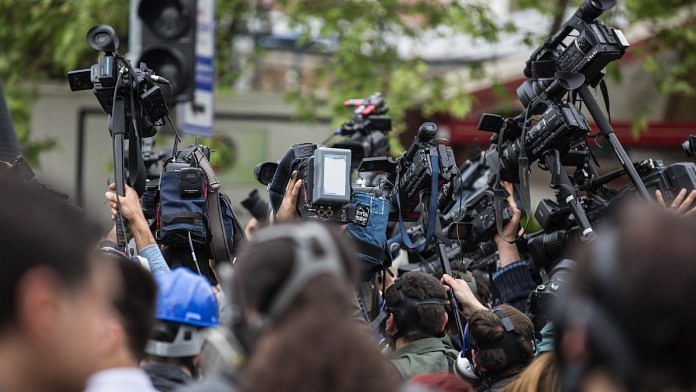Thank you dear subscribers, we are overwhelmed with your response.
At first, cinema was a quiet symphony in which emotion was more influenced by perspective than by color. Prior to actors, the camera guided the wordless narrative with its purposeful silence. It is a cognitive medium that influences our perception of what is portrayed and our place within it, that goes beyond conventional framing. As Teddy Thaddeus Hanmakyugh puts it, “To get the audience involved on the screen is the most dramatic and interesting approach to telling a visual story.” For this, the filmmaker makes the camera a perceptive tool rather than a passive observer. Hanmakyugh says the camera doesn’t just show, it psychologically weighs and places, which affects what we see and feel. The camera sees everything, unlike the eye, which filters.
Seeing and Being Seen
Hanmakyugh points out that perspective sets film apart from theater, where the latter’s audiences stay fixed, with the former one’s shifting with every scene. “Each time one shot finishes and another one begins,” the viewer’s psychological relationship resets. This shifting is emotional as well as spatial.
Angles influence our perceptions of vulnerability, closeness, and power. Hanmakyugh connects this to the cathartic effect where it evokes instinct rather than merely interpretation. Like how high angles suggest weakness, whereas low angles imply dominance.
Joseph Goebbels filmed Hitler from below for this reason. This is also the reason why cameras in courtroom dramas tilt up at judges, and down at defendants. It is also the reason why Batman in The Dark Knight evokes dread. It is not just because of his actions but also because he is actually admired.
The Subjective Lens: Entering the Character’s Mind
The camera angles create intimacy beyond power. Robert C. Morton writes that the “subjective camera… places the viewer in the picture,” either as a participant or in a character’s place.
This is best shown in point-of-view images. Sara Goldfarb’s delusions are depicted in Requiem for a Dream using distorted lenses and close-ups. We sense her anxiety in addition to seeing it. These are not aesthetic decisions; they are psychological simulations. More significantly, we feel her feelings as though they were our own.
Hanmakyugh contrasts this with distance-preserving “objective” shots. Subjective viewpoints elicit empathy while avoiding analysis. The viewer loses emotional agency as the lens takes on the role of the character’s eye. This is alignment rather than manipulation. Excellent cinematography blends into emotion without standing out.
Close-Up Shots: Intimacy in Isolation
Close-ups are intense.They don’t just show, they pull us in. Hanmakyugh says they “eliminate all non-essentials,” with no room for escape. Omission is their strength, displaying only significant situations and subtly.
The last standoff in The Good, the Bad, and the Ugly is more about waiting than shooting; suspense is gradually increased by close-ups of sweat, fingers, and eyes. Close-ups “give small movements a lot of importance,” according to Val Morgan. They are tactile as well as visual. You put up with them.
Angles as Narrative: Bias, Control, Empathy
“Narrative bias” is established by the camera angles. Where compassion flows depends on where the lens is positioned.
Michael is presented without bias before to violence in The Godfather. His change takes place with the dip of the camera angle, where we look up, indicating power shift and transformation that the audience realizes before him.
This is film’s silent grammar, where wide shots introduce, close-ups ask, and over-the-shoulders involve, a still frame watches and a moving one follows. “The filmmaker uses the camera to show the audience things from different viewpoints and perspectives,” according to Hanmakyugh. It is sensory rather than intellectual.
Fletcher is sliced into view in Whiplash rather than being merely framed. His power is brutally rhythmic. More than music, the cinematography intimidates..
Fluid Angles, Felt Moments
Meaning shifts by movement. “A low angle can suggest power—but push the camera forward and that power becomes menace or awe.” Motion turns impressions into experience.
In long takes for Children of Men, Cuarón positions the camera shoulder-height behind the main character. We run through conflict, not watch it, where tension causes time to expand.
Randy is followed closely by Aronofsky’s handheld camera in The Wrestler, which is a little wobbly. Fatigue is evoked by the angle and motion, with the past dragging, the future fading. Randy’s life feels lived, not watched as realism and immediacy are visible.
The Silent Star
It’s not a trick. They are moving portraits. And all these shots prove only a single point that the frame is not neutral. It takes sides. Hanmakyugh concludes: “The effectiveness of the visual language of film… is encapsulated in the way different types of shots are used to express meaning and affect people.” Film places us rather than only speaking. Our eyes tell the tale. Cinema captivates in that space between perception and lens.
These pieces are being published as they have been received – they have not been edited/fact-checked by ThePrint.


